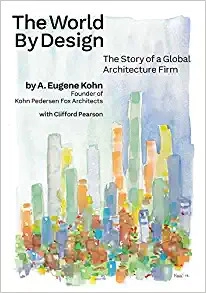Reading Level
What is the reading level of The World by Design: The Story of a Global Architecture Firm?
Analysing the books in the series, we estimate that the reading level of The World by Design: The Story of a Global Architecture Firm is 7th and 8th grade.
Expert Readability Tests for
The World by Design: The Story of a Global Architecture Firm
| Readability Test | Reading Level |
|---|---|
| Flesch Kincaid Scale | Grade 7 |
| SMOG Index | Grade 11 |
| Coleman Liau Index | Grade 9 |
| Dale Chall Readability Score | Grade 5 |
Reading Time
5 hrs 53 mins
How long to read The World by Design: The Story of a Global Architecture Firm?
The estimated word count of The World by Design: The Story of a Global Architecture Firm is 88,195 words.
A person reading at the average speed of 250 words/min, will finish the book in 5 hrs 53 mins. At a slower speed of 150 words/min, they will finish it in 9 hrs 48 mins. At a faster speed of 450 words/min, they will finish it in 3 hrs 16 mins.
| The World by Design: The Story of a Global Architecture Firm - 88,195 words | ||
|---|---|---|
| Reading Speed | Time to Read | |
| Slow | 150 words/min | 9 hrs 48 mins |
| Average | 250 words/min | 5 hrs 53 mins |
| Fast | 450 words/min | 3 hrs 16 mins |
- Authors
-
A. Eugene Kohn
More about The World by Design: The Story of a Global Architecture Firm
88,195 words
Word Count
for The World by Design: The Story of a Global Architecture Firm
328 pages
Pages
9 hours and 29 minutes
Audiobook length
Description
"Name any city that has seen explosive growth in the past century—Tokyo, Hong Kong, Shanghai, Singapore, Jakarta, Bangkok, Seoul, Kuala Lumpur—and he's had a hand in the making of its skyline. Name any 'old world' financial metropolis—New York, London, Frankfurt—and he's had a hand in designing its skyline, too.” (Juan Sebastian Pinto for Forbes.com) In a series of fascinating tales, Gene Kohn explains how he helped build one of the most successful architecture firms in the world, offering inspiring lessons on business leadership and design innovation that can be applied to many fields. Founded on July 4, 1976, Kohn Pedersen Fox quickly became a darling of the architectural press with groundbreaking buildings such as the headquarters for the American Broadcasting Company (ABC) on Manhattan’s Upper West Side, 333 Wacker Drive in Chicago, the Procter & Gamble headquarters in Cincinnati, and the World Bank Headquarters in Washington, DC. By the early 1990s, when most architecture firms in the U.S. were struggling to survive a major recession, KPF was busy with significant buildings in London, Germany, Canada, Japan, Korea, and Indonesia—pioneering a model of global practice that has influenced architecture, design, and creative-services firms ever since. Like any other business, though, KPF has stumbled along the way and wrestled with crises. But through it all, it has remained innovative in a field that changes all the time and often favors the newest star on the horizon. Now in its fifth decade, the firm has shaped skylines and cities around the world with iconic buildings such as the World Financial Center in Shanghai, Roppongi Hills in Tokyo, the International Commerce Centre in Hong Kong, the DZ Bank Tower in Frankfurt, the Heron Tower in London, and Hudson Yards in New York. Forthright and engaging, Kohn examines both award-winning achievements and missteps in his 50-year career in architecture. In the process, he shows how his firm, KPF, has helped change the buildings and cities where we live, work, learn, and play.
